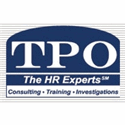Q: As a manager, I am frustrated with the low rate of success we are having when hiring employees. Some don’t have the skills they claimed to have, others leave for another opportunity after we have trained them, and we’ve hired our share of people whose personality doesn’t fit with the company culture. How can we do a better job of screening and hiring employees that will contribute to our organization’s success?
A: You are not alone, we find that most hiring managers and supervisors share your frustration. Most have not undergone training in legal and effective hiring practices. Anyone involved in the hiring process should be made aware of the state and federal anti-discrimination laws to avoid asking legally inappropriate questions. The basic rule is: if it isn’t job-related, don’t ask it.
Often managers are so fearful that they will ask an illegal question that they tend to overlook all of the legally appropriate screening and interviewing opportunities that help “predict” how the candidate will perform and behave as an employee. To improve the quality of hiring decisions, a structured approach is best. Hiring is subjective by nature – this is not an exact science! To improve hiring decision outcomes, managers must introduce as many structured, job-relevant “objective” elements to the process as possible. This way, we can work to avoid choosing the candidate who is the best at INTERVIEWING, and hire the one who will be the best EMPLOYEE!
Poor Hiring Decisions Affect . . . Morale; Productivity; Customer Service; Potential Legal Problems; Management Credibility, and more. Fortune magazine reports, “an employee who flops and leaves after a few months can cost a company anywhere from $5000 for an hourly worker to $75,000 for a manager in lost productivity and money spent on training. The cost may be even greater if you hire the wrong person and he or she stays on, making mistakes and sabotaging morale (& customer relations).”The average selection error costs your organization a minimum of two times that individual’s annual salary.
A helpful technique is to consider is A.I.M.ing at the hiring target.
Abilities: Can they do the job based on past education and experience?
Interests: Are they motivated to do the job well and committed to stay with the organization?
Manageability: Will they accept direction, manage stress, and get along with others?
Most employers miss the hiring “target” due to inadequate:
· Analysis of Job Functions
Develop a Job Description based on clear understandings of the tasks and responsibilities of the position – know what you are looking for. Write job ads, create interview and screening processes, and evaluate future performance based on this analysis.
· Analysis of Personality Traits
Ascertain essential characteristics of a top performer in this job (don’t hire an introvert as a receptionist or an extrovert as a data entry person). Incorporate these traits into the Job Description whenever possible.
· Initial Screening
Ask structured questions (why interested, compensation needs, schedule, etc.) and check the quality of interpersonal skills, how the application was completed, etc. for initial indicators of the possible “match”.
· Questioning Techniques
Prepare interview questions based on the job functions and personality traits for the job. Use behavioral questions (tell me about a time when, give me an example of, how would you handle . . .); rather than closed questions (do you have, can you do, have you done).
· Predictive Assessments
Simulate essential tasks and responsibilities to get a “preview” of how the person would actually perform in the job (accounting tests, vocabulary, software proficiencies, telephone skills, grammar and spelling). You can set up some scenarios and role-plays of client interactions or internal situations they may encounter, and check their knowledge, judgment and communication style in handling the simulated situation.
· Use of Second Opinions
Including more than one person in the screening process will help reduce the subjectivity. Integrating coworker input is extremely worthwhile, but should be well structured to avoid legal missteps.
· Providing of Realistic Pay & Career Information
Avoid “embellishing” or omitting important information in this regard, or employees will often become discontent and leave for other opportunities.
· Reference Checking
The best predictor of how an employee will perform is how they have performed in the past.
· Orientation and Training
New employees require integration support to help them adapt and develop competencies to perform in the job.
TPO is an award-winning firm established in 1991 made up of a group of highly experienced, nationally certified HR experts and trainers. TPO is licensed by the State of California (PI-25638) to provide investigative services. For more information, please contact us at 800-277-8448 or visit our web site www.tpohr.com.
Contents © 2011 TPO Human Resource Management. No part of this article may be reproduced, excerpted or redistributed in any form without express written permission from TPO Human Resource Management.

No comments:
Post a Comment